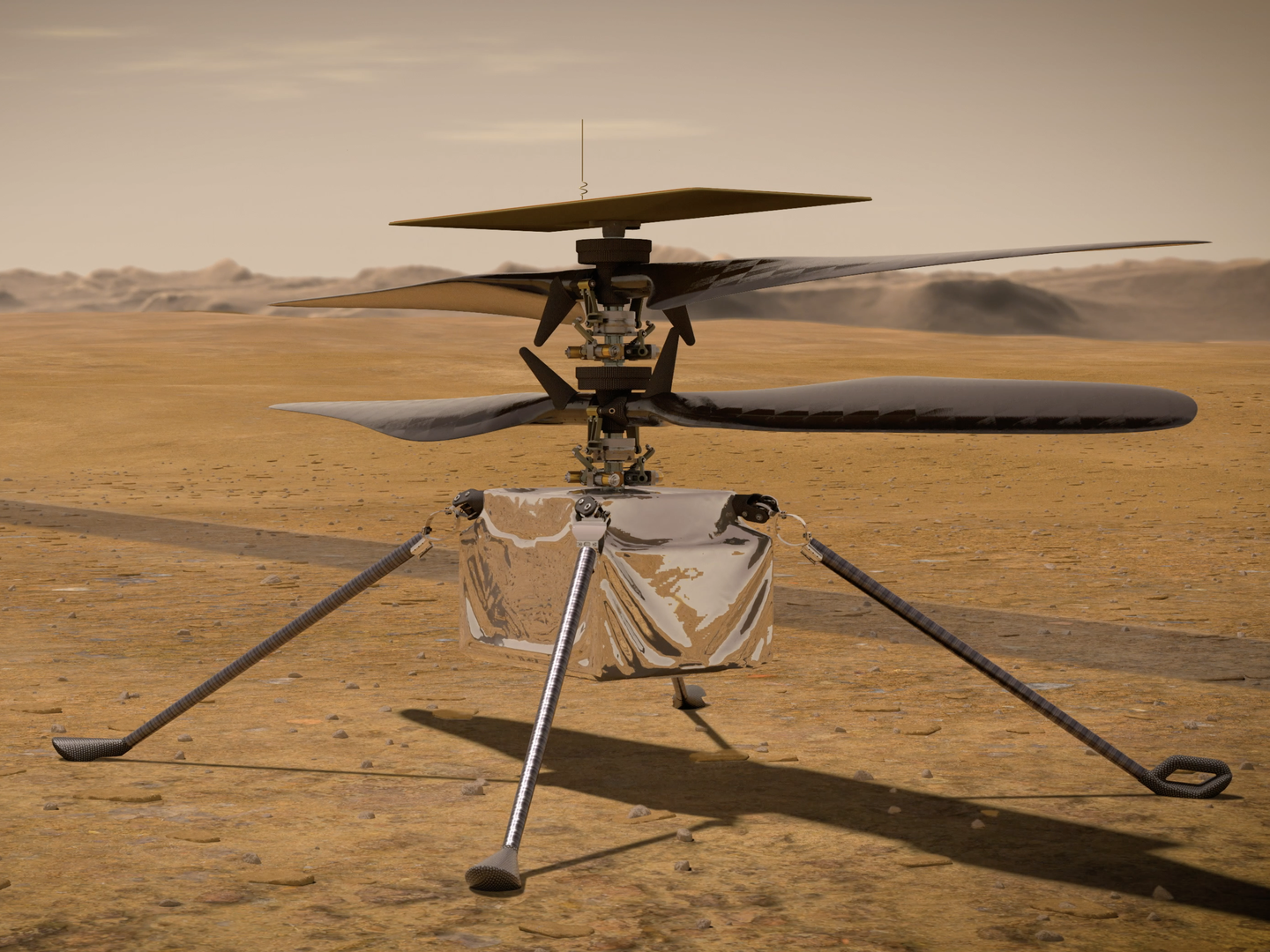NASA’s Mars helicopter may soon be the first to fly on another planet
It’s a flight of Wright brothers proportions.

The most sophisticated robotic explorer yet, NASA’s Perseverance, is currently zipping through space en route to its final destination: Mars. Aiming to land in a hazard-laden crater next to an ancient riverbed, researchers hope our SUV-sized robot emissary will help us find fossilized clues of ancient life and collect samples that will eventually be returned to Earth potentially as early as 2031.
But NASA’s Perseverance rover isn’t the only machine going boldly to the Red Planet. Tucked beneath the Mars-bound rover’s belly is a svelte hitchhiker named Ingenuity. In just a few weeks, it will attempt to become the first aircraft to take flight in an alien world.
“It’ll be a Wright’s brothers moment for us,” says Bob Balaram of the Jet Propulsion Laboratory, Ingenuity’s chief engineer. “The first flight of an experimental aircraft was back in Kitty Hawk. You can see how far we’ve come on Earth from such a first step. We are hoping that if we are successful, it’s going to be a similar kind of moment.”
Designing Ingenuity presented many challenges for Balaram and his team. The temperature drops down to minus-130 degrees Fahrenheit at the Jezero Crater. It’s so cold on Mars that just one-third of the helicopter’s power can be used for flying; a lot of other power goes to keeping the helicopter online throughout the frigid martian night in order to warm up the craft’s electronics.
But chilly temperatures are only the beginning of the problems that a would-be Martian aviator would face. Mars’ atmosphere is 99 percent thinner than Earth’s, with a third of its gravitational pull. In order to generate enough lift, the chopper features two 4-foot-long carbon-fiber blades that spin at roughly 2,400 rpm on counter-rotating motors—about eight times faster than the blades spin on a standard helicopter on Earth. Ingenuity has an incredibly lightweight design, clocking in at only 4 pounds with a fuselage slightly bigger than a softball.
That being said, Ingenuity has relatively limited abilities. The solar-powered chopper is designed to take-off, hover no more than a few dozen feet above the surface, maneuver through Mars’ thin air, and land on flat terrain. Over the course of 30 Martian days, a team of NASA engineers back home on Earth will test out Ingenuity’s ability to fly.
Once Perseverance lands on the rugged Martian surface, the six-wheeled robotic geologist will set off on its own mission while also searching for a suitable place to deploy Ingenuity as soon as possible. “When we say suitable spot, we’re looking for a flat piece of ground,” Balaram adds. After the copter detaches from the rover, Perseverance will take social distancing to new heights by driving away about 330 feet from Ingenuity in order to minimize collision risk.
Finally, Ingenuity will take off on its first flight well within the watchful eye of the Perseverance rover and its cameras. Assuming Ingenuity is able to get off the surface and land safely again, the copter will fly up to four more times. With each attempt, it will try to go a little higher and farther.
But Balaram stresses this is a high-risk, high reward mission. “We are essentially trying a completely new form of mobility on a different planet, which has many challenges in terms of how you fly. Success is not guaranteed and we will take success with each step: When we land in three weeks, when we get deployed on the surface, when we check out and survive the first night without freezing, when we get that first flight under our belt, all of those will be important milestones along the way.”
Alas, once the test period is over, Perseverance will bid Ingenuity adieu, having fulfilled its mission of proving that aircraft can operate on other worlds. If all goes well, Balaram says, the data acquired during these tests will help lay the groundwork to fly bigger and better aircraft, capable of carrying a full payload of scientific instruments to explore the skies of distant worlds.
And before Ingenuity can fly, Perseverance needs to nail its landing. Fingers crossed!
